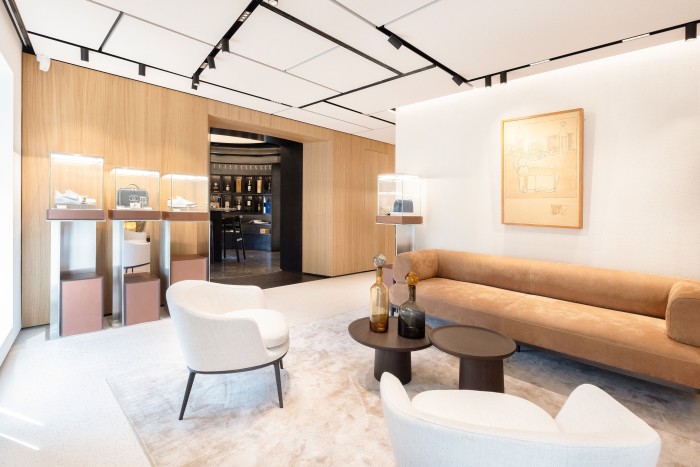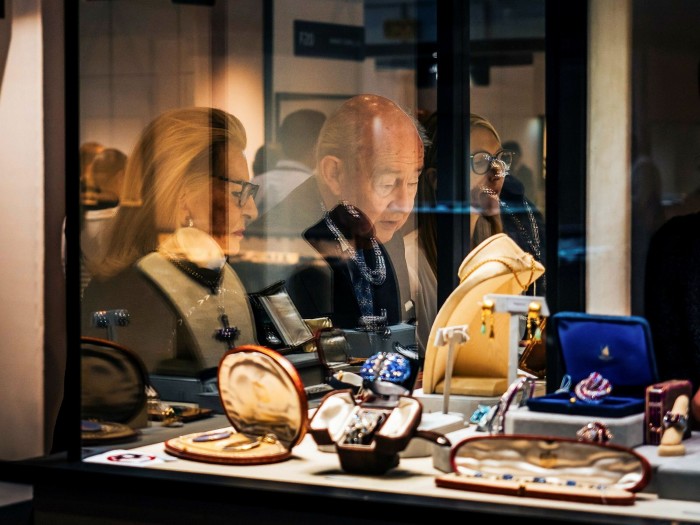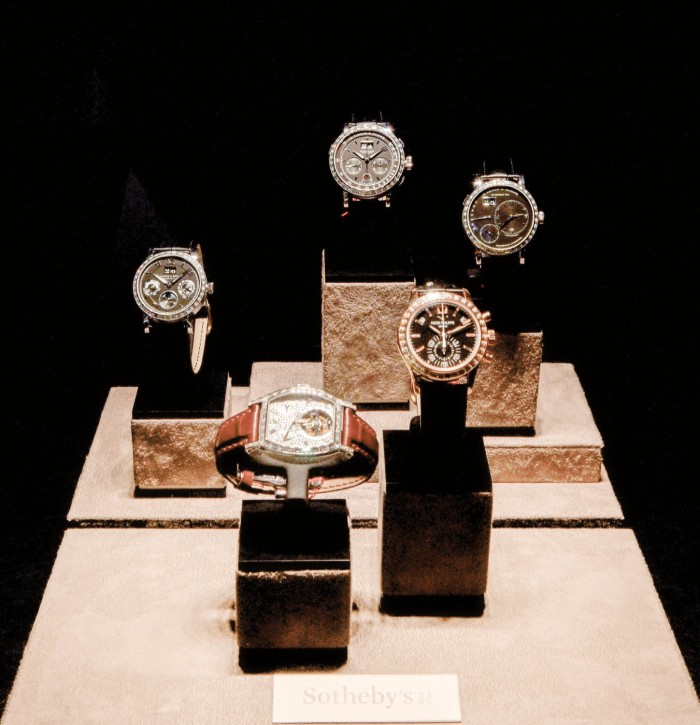Platforms race to take a slice of the vintage jewellery market

Roula Khalaf, Editor of the FT, selects her favourite stories in this weekly newsletter.
The business of vintage jewellery is booming. New platforms dedicated to pre-owned jewellery are being launched on a weekly basis and, although vintage only makes up 5 per cent of the total jewellery market — estimated to be worth $350bn-$400bn — it is growing at a faster rate, according to Alexander Thiel, a partner at McKinsey in Zurich.
The sales channels are diverse. Last month, Sotheby’s opened The Salon within Bucherer’s Zurich store — its first permanent retail space dedicated to the luxury segment, including jewellery, following the launch of its online platform two years ago. September also saw traditional bricks-and-mortar resellers showcasing their jewellery at Lapada, the Association of Art and Antiques Dealers fair.
Next month, GemGenève will feature even more vintage jewellery businesses. “Originally, we envisaged an annual event, but the feedback from our exhibitors and trade visitors led us to host the show twice a year,” says Nadège Totah, a member of the board of GemGenève which, in May, saw visitor numbers up nearly a quarter compared with the 2022 event.
Ebay has introduced a certification scheme for watches and jewellery, while online ventures — such as Omneque, Castafiore, 58 Facettes, and Collector Square — have expanded their presence.
For the past five years, even retailers focusing on the primary market, such as jewellery specialist Auverture and UK luxury fashion group Farfetch, have included pre-owned jewellery.
The wide range of vintage jewellers reflects the level of market fragmentation. However, while business models vary, they are all underpinned by the challenges of sourcing and selling vintage jewellery.
“The growth of vintage jewellery is driven by both increased demand and better-organised supply,” says Thiel. The demand stems from multiple consumer trends. Two-thirds of buyers look for rare pieces to differentiate themselves, while the remaining third are hunting for bargains on so-called icons, highly recognisable jewellery, usually from bigger brands, signalling status.

“Both groups are lured by the aura of exclusivity, but are confronted by the risk of fake,” adds Thiel.
On the supply side, while the rise of online shopping has benefited most retailers by driving growth, sourcing pieces and verifying their authenticity remain considerable hurdles. Several brands and established retailers who have embraced vintage watches have so far shunned a similar opportunity with jewellery. Appraisers and authenticators trained at auction houses are in high demand among new businesses launching vintage jewellery, not only because of their skills in ascertaining the quality of the products but also because of their contacts in the trade to source goods.
Sotheby’s is eager to exploit its experience in sourcing and authenticating antiques in order to grow. Josh Pullan, head of Sotheby’s global luxury division, says its business of selling pieces consigned directly to the company from private traders at a fixed price doubled in size between 2021 and 2022, with the average value of items sold increasing by 30 per cent to $7,000.
Masterclasses held in The Salon in Zurich help spread knowledge about hard luxury — generally defined as watches, jewellery and handbags — thus attracting new groups of collectors. “What we’re doing now is combining the best of physical and digital worlds into the space, combining Sotheby’s and Bucherer’s expertise,” Pullan says.

Lydia Tufnell, jewellery category manager at Farfetch, says that the introduction of vintage jewellery in 2019 is a critical factor of differentiation for the platform. “We partner with new boutiques and brands in order to continue sourcing unique supply,” says Tufnell, with profit margins dependent on the jewellery’s provenance, import and export costs and general demand.
Yet, although booming, the market for vintage jewellery has plenty of room to grow. “In the US, we estimate that second-hand jewellery represents about $1bn-$2bn, or 1-3 per cent of the overall US jewellery market — whereas second-hand watches represent about $4-$5bn, or about 35-45 per cent of overall US watch market,” says Pierre Dupreelle, global leader for customer behaviour at the Boston Consulting Group.
“Additionally, the second-hand watch market has traditionally been more brand- and model-driven than second-hand jewellery, leading to consumer focus on specific references. These factors explain why there has been less speculation in prices in this [jewellery] market as opposed to the watch market,” he adds.
Although Cartier, Van Cleef & Arpels and Buccellati sell their own vintage pieces to clients, the offer is seen as more of a service than a business. The lengthy processes involved in authenticating jewellery — especially when they are set with various gemstones — and the difficulty of pricing the old next to the new have kept brands and large retailers away.
McKinsey’s Thiel sees a scenario like that in the vintage watch market — where peer-to-peer online site Chrono24 emerged as the market leader in second-hand models — being replicated in vintage jewellery. “There is no inherent value for customers to have many fragmented platforms, marketplaces or retailers offering vintage jewellery, and consolidation is to be expected,” he says. The Chrono24 of jewellery spot is still up for grabs.
Comments